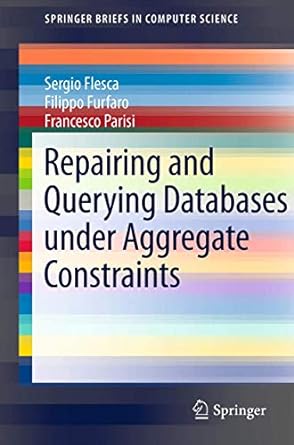Answered step by step
Verified Expert Solution
Question
1 Approved Answer
//Implment insertion sort using smart pointers. //You are not allowed to swap node values; instead, you are only //allowed to change pointer addresses. #include #include
//Implment insertion sort using smart pointers. //You are not allowed to swap node values; instead, you are only //allowed to change pointer addresses. #include#include using namespace std; class node { public: int value; //node * next; //node * previous; shared_ptr next; weak_ptr previous; //node(int i) { value = i; next = previous = nullptr; } node(int i) { value = i; } //node() { next = previous = nullptr; } node() {} }; class doubly_linked_list { public: //node * head; //node * tail; shared_ptr head, tail; //doubly_linked_list() { head = tail = nullptr; } doubly_linked_list() {} void make_random_list(int m, int n); void print_forward(); void print_backward(); //*************************** //You need to implement insertion_sort following the //special requirements. void insertion_sort(); }; void doubly_linked_list::make_random_list(int m, int n) { for (int i = 0; i < m; i++) { //node * p1 = new node(rand() % n); shared_ptr p1 = make_shared (rand() % n); p1->previous = tail; //if (tail != nullptr ) tail->next = p1; if (tail) tail->next = p1; tail = p1; //if (head == nullptr) head = p1; if (!head) head = p1; } } void doubly_linked_list::print_forward() { cout << endl; //node * p1 = head; shared_ptr p1 = head; //while (p1 != nullptr) { while (p1) { cout << p1->value << " "; p1 = p1->next; } } void doubly_linked_list::print_backward() { cout << endl; //node * p1 = tail; shared_ptr p1 = tail; //while (p1 != nullptr) { while (p1) { cout << p1->value << " "; p1 = p1->previous.lock(); } } int main() { doubly_linked_list d1; d1.make_random_list(30, 10); d1.print_forward(); d1.print_backward(); d1.insertion_sort(); d1.print_forward(); d1.print_backward(); getchar(); getchar(); return 0; }
Step by Step Solution
There are 3 Steps involved in it
Step: 1

Get Instant Access to Expert-Tailored Solutions
See step-by-step solutions with expert insights and AI powered tools for academic success
Step: 2

Step: 3

Ace Your Homework with AI
Get the answers you need in no time with our AI-driven, step-by-step assistance
Get Started


